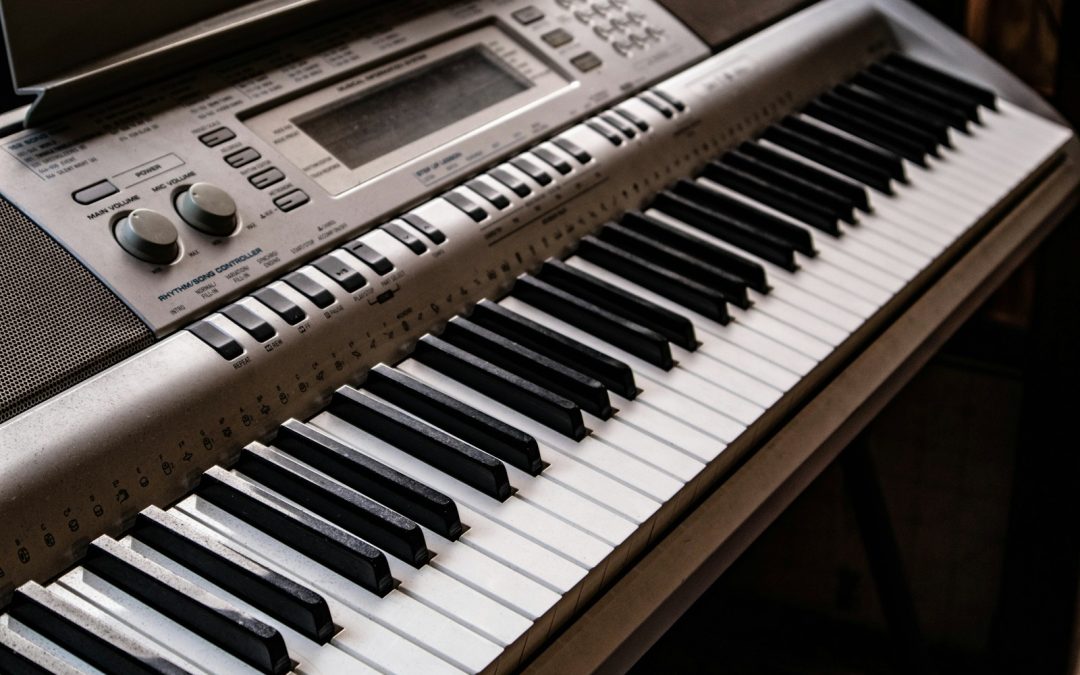As a seasoned musician, I've often been asked about the similarities between keyboards and pianos. It's an interesting topic, and one that I'm excited to delve into in this article. Both instruments share a common ancestry and have keys that produce music, but that's just the tip of the iceberg.
We'll explore the shared history of these instruments, their structural similarities, and how their functions overlap in the world of music. Whether you're a budding pianist, an electronic music enthusiast, or just curious about music theory, there's something in this discussion for you. So, let's dive into the fascinating world of keyboards and pianos, and discover what makes them so alike yet uniquely different.
History of Keyboards and Pianos
As we delve deeper into our exploration, it's fascinating to note that the ancestors of our modern day keyboards and pianos have quite a rich history. Starting with ancient Greek water organs, known as hydraulis, they later evolved into pipe organs in the early Medieval era.
In the 14th century, organ designers began creating smaller, portable versions: the predecessors to our keyboard instruments. However, the true breakthrough came in the 18th century with the invention of the 'pianoforte'. This instrument, commonly known as the piano, was revolutionary and completely transformed the world of music.
Let's fast forward to the 20th century when technology began transforming musical instruments again. Enter stage: the electronic keyboard. This innovation was also revolutionary in its own right, allowing for a wider range of sounds and techniques that were not previously possible with traditional pianos and organs
It just goes to show, the journey that brought us to the keyboards and pianos we know today was one filled with innovation and adaptation. So, next time you sit down to play, remember you're not just playing an instrument, but engaging with a piece of history.
|- Century -|--- Instrument---|
| 8th Century BC | Greek water organ or Hydraulis |
| Early Medieval Era | Pipe Organ |
| 14th Century | Portable Organs |
| 18th Century | Pianoforte (Piano) |
| 20th Century | Electronic keyboards |
And remember, histories aren't merely strings of dates and names. They're rich tapestries woven from countless threads of human experience and innovation. Understanding the journey of these instruments can only enhance our appreciation of them and their role in expressing humanity’s shared language - music. That's why it's worth knowing the story behind the keys, be it of a keyboard or a piano.
Structural Similarities
Let's delve into the structural similarities between keyboards and pianos. At first glance, it's clear that both instruments have a similar layout. This isn't by chance; it's a design feature that has its roots in the 18th century when the piano was first invented.
The basic layout of a piano and a keyboard consists of a series of white and black keys. This chromatic pattern provides 12 pitches on each octave. The pattern is repeated across the breadth of the instrument, providing multiple octaves for the musician to work with.
Both keyboards and pianos have these 12 notes per octave, seven of them white (representing the seven musical notes- A, B, C, D, E, F, G) and five black ones (representing the sharps and flats). This design is universal in all modern keyboard-like instruments. It's noteworthy to mention that this specific design is directly influenced by the initial piano layout.
| piano | keyboard | |
|---|---|---|
| White keys per octave | 7 | 7 |
| Black keys per octave | 5 | 5 |
| Total keys per octave | 12 | 12 |
Another similarity is the manner in which sound is produced. In both instruments, when a key is depressed, it triggers a mechanism that eventually leads to the production of sound. This is broadly similar even though the specifics vary between a traditional acoustic piano and an electronic keyboard.
However, it's important not to oversimplify. While these instruments look similar and work on similar principles, they’re far from the same. In our upcoming sections, we will look at differences in sound production, playing technique and other aspects to see how pianos and keyboards vary in functionality. Let's continue to explore these richly complex and wonderful instruments.
Key Functions
When it comes to Key Functions, keyboards and pianos share several similarities. To start with, both instruments feature the same basic layout: a pattern of white and black keys repeating over several octaves. Typically, there are seven white keys and five black keys per octave, resulting in a twelve-tone chromatic scale.
You'll appreciate the identical pattern of these keys on both instruments. For example, the C-major scale - all white keys from one C to the next - works the same way whether you're playing it on a piano or a keyboard. However, the actual sound produced when a key is depressed can vary significantly between the two instruments.
The piano produces sound by having hammers strike strings inside the body of the instrument. The harder you hit the key, the louder the sound. Given its acoustic nature, it offers a wider dynamic range than a keyboard.
On the contrary, keyboards strike a balance between versatility and portability. Their reliance on digital sound production makes them more adaptable. In fact, with a keyboard, the musician has access to numerous instrument sounds beyond piano, such as strings, organ, and even percussion.
While each instrument satisfies different needs, they share the same basic principles of operation. Here's a quick comparison:
| Keyboard | Piano | |
|---|---|---|
| Sound production | Digital | Acoustic |
| Number of keys per octave | 12 | 12 |
| Versatility of sounds | High | Low |
| Dynamic range | Limited | Wide |
In understanding these key functions, it's easier to appreciate the complexity and uniqueness of both the keyboard and the piano, attesting to their phenomenal capacities as musical instruments. We will dig deeper into these aspects as the exploration continues.
Musical Applications
Delving further into the musical applications of keyboards and pianos, it becomes even more obvious that they cater to different types of musicians and composers. Yes, they have common ground - we've talked about the structural similarities and sound production - but their applications can't be more diverse. And that's what makes them both fascinating in their own right.
A keyboard, with its diverse sound palette, is a popular choice among music producers, composers, and touring musicians. It's the versatility of sounds on offer that makes it perfect for these applications. From creating ethereal pads to simulating the intricate sounds of an orchestra, a keyboard shines through its adaptability. This diverse nature makes it a perennial favourite in music studios and on the concert stage.
On the other hand, the piano finds its niche with purists, classical musicians, and those who chase the raw, emotional power of each note. Unlike the keyboard, the piano doesn't just play 'sounds', it delivers an experience. The resonance of a grand piano is incomparable, filling a concert hall with its intricate harmonics and overtones. The touch-responsive keys of a piano also allow for expressive playing - the harder you strike a key, the louder the sound. This dynamic range is integral to the emotion of a piece, be it a soothing lullaby or a powerful concerto.
It's also worth mentioning that pianos are typically more present in formal music education. The piano's layout and the physical interaction it offers make it a fantastic tool for learning the basics of music theory, composition, and performance.
Let's have a quick look at these applications:
| Instrument | Popular Use | Main Strength |
|---|---|---|
| Keyboard | Music production, touring | Versatile sound selection |
| Piano | Concert performance, education | Emotional depth and dynamic range |
Moving forward in our exploration, we'll journey into the world of digital technology and its influence on these instruments.
Conclusion
So, we've seen that keyboards and pianos share a rich history and a common structural base, yet they each offer unique sound possibilities. Keyboards, with their versatility, cater to a broad spectrum of musicians and composers. Pianos, on the other hand, resonate with those seeking a more authentic, emotional connection with their music. They're also a staple in formal music education. As we move forward, I'm excited to delve into how digital technology is shaping these instruments. It's a fascinating journey, one that continues to evolve and inspire musicians worldwide. Stay tuned as we navigate this digital frontier together.
Harlan Kilstein began playing piano during covid with no piano background at all. He taught himself how to play learning what to do and what not to do.
Today he's an advanced intermediate player and can help you grow in your skills because he learned all this on his own.








